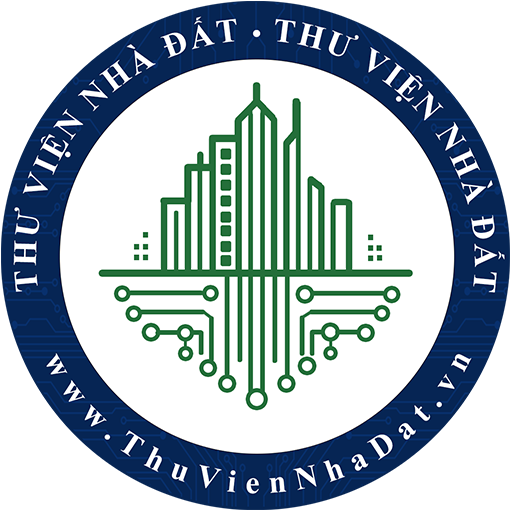|
THE
MINISTRY OF TRANSPORT OF VIETNAM |
SOCIALIST
REPUBLIC OF VIETNAM |
|
No. 06/2024/TT-BGTVT |
Hanoi, March 31, 2024 |
NATIONAL TECHNICAL REGULATION ON EXPRESSWAY
Pursuant to the Law on Road Traffic dated November 13, 2008;
Pursuant to the Law on Technical Regulations and Standards dated June 29, 2006;
Pursuant to Decree No. 127/2007/ND-CP dated August 01, 2007 of the Government elaborating the Law on Technical Regulations and Standards;
Pursuant to Decree No. 78/2018/ND-CP dated May 16, 2018 of the Government on amendment to Decree No. 127/2007/ND-CP ;
Pursuant to Decree No. 56/2022/ND-CP dated August 24, 2022 of the Government on functions, tasks, powers, and organizational structures of Ministry of Transport;
At request of Director of Science - Technology and Environment Department and Director of Vietnam Expressway Authority;
The Minister of Transport promulgates Circular on National Technical Regulation on Expressway,
Article 1. The National Technical Regulation on Expressway is attached hereto.
Number QCVN 115:2024/BGTVT.
1. This Circular comes into force from October 01, 2024.
2. Transition clauses
a) Investment projects for the construction of expressways having their investment guidelines approved before the effective date hereof shall adhere to regulations applicable as of the date on which the investment guidelines are approved;
b) In respect of expressways with maximum design speed of 80 km/h that are active before the effective date hereof, for the purpose of upgrade and expansion, technical factors can be applied to projects approved before the effective date hereof.
Article 3. Chief of Ministry Office, Chief of Ministry Inspectorate, directors, Director of Vietnam Expressway Authority, Director of Directorate for Road of Vietnam, heads of relevant agencies, entities, and individuals are responsible for the implementation of this Circular./.
|
|
PP.
MINISTER |
NATIONAL TECHNICAL REGULATION ON EXPRESSWAY
Foreword
The QCVN 115:2024 “National Technical Regulation on Expressway” is compiled by the Vietnam Expressway Authority, Approved by the Science - Technology and Environment Department, appraised by the Ministry of Science and Technology, and promulgated by the Ministry of Transport under Circular No. 06/2024/TT-BGTVT dated March 31, 2024.
Table of contents
1. GENERAL PROVISIONS
2. TECHNICAL PROVISIONS
3. ORGANIZING IMPLEMENTATION
NATIONAL TECHNICAL REGULATION ON EXPRESSWAY
1.1 Scope
This Regulation prescribes technical requirements and management requirements in construction, management, operation, usage, and maintenance of expressways (excluding urban expressways).
1.2 Regulated entities
This Regulation applies to organizations and individuals relevant to the investment, construction, management, operation, usage, and maintenance of expressways.
1.3 Design speed of expressway
Design speed of expressway is divided into 3 bands:
The 120 band has design speed of 120 km/h;
The 100 band has design speed of 100 km/h;
The 80 band has design speed of 80 km/h; a design speed of 60 km/h is allowed in areas with harsh terrain conditions or areas under restriction of national defense and security;
An expressway may consist of segments with varying speed bands as long as each segment lasts at least 15 km in length and differences in design speed of two adjacent segments do not exceed 20 km/h. Where an expressway is subject to more than one band (20 km/h), a transition segment of at least 2 km in length with intermediate design speed is required.
1.4 Reference documents
Reference documents used in this document include:
- QCVN 41: 2019/BGTVT “National Technical Regulation on Traffic Signs and Signals’’.
- QCVN 43: 2012/BGTVT “National technical regulation on Roadside Station”.
- QCVN 07-4:2023/BXD “National Technical Regulation on Technical Infrastructure System - Urban Transportation Works”.
- QCVN 66:2013/BGTVT “National Technical Regulation on Highway Weigh Station”.
- QCVN 02:2022/BXD “National Technical Regulation on Physical Natural and Climatic Data for Construction”.
1.5 Definitions
In the Regulation, the terms below are construed as follows:
1.5.1 Expressway
Refers to a technical grade of roads for use by motorized vehicles, outfitted with median strips separating opposing directions of travel, not accommodating at-grade crossing with other road or roads, outfitted with adequate equipment, accommodating continuous, safe traffic, shortening travel time, and allowing entry, exit at designated locations.
1.5.2 Design speed
Refers to velocity values that serve the calculation and selection of technical indicators of expressway.
1.5.3 Operating speed limit
Refers to speed restrictions (maximum speed, minimum speed) with which vehicles operating on expressway must comply.
1.5.4 Breakdown lane
Refers to a lane that serves as temporary parking space for accident-stricken vehicles, accommodates operation of rescue vehicles and where other vehicles are prohibited from operating on and parking on except for priority vehicles.
1.5.5 Design vehicle flow
Refers to number of cars equivalent derived from the number of other vehicles passing through a cross section over a unit of time in the future year. The future year refers to the 20th year from the year in which expressway construction is expected to finish.
2.1 General requirements
2.1.1 Structure of expressway must meet integrity and stability requirements and conform to natural conditions.
2.1.2 Expressway contains at least 4 lanes (2 lanes per direction of travel) and is outfitted with continuous breakdown lanes (except where: the expressway crosses a bridge with at least 150 m in span or 50 m in pier height; the expressway travels in tunnel; deceleration and acceleration lanes are located on the expressway; climbing lanes are located on the expressway).
2.1.3 Structures attached to expressway include: Traffic management and coordination center; Roadside stations; Stop-less electronic tolling system; Weigh stations; Barriers.
2.1.4 Cross-section of expressway may rest on the same road base or two separate road bases if two directions of travel are situated on two separate road bases.
2.2 Cross-section of expressway
2.2.1 Number of lanes is determined on the basis of design vehicle flow and is at least 2 lanes per direction of travel. Width of a lane is at least 3,75 m for band 120, band 100 expressways and at least 3,50 m for band 80 expressways.
2.2.2 Width of breakdown lanes is at least 3,00 m for band 120 and band 100 expressways and at least 2,50 m for band 80 expressways.
2.2.3 Median strip
2.2.3.1 Median strips (consisting of medians and safety strips on both side of the medians) are required to separate two directions of travel where cross-section of the expressway rests on the same road base. Width of safety strips is at least 0,75 m for band 120 and band 100 expressways and at least 0,50 m for band 80 expressways. Median strips are designed so to meet safety requirements.
2.2.3.2 Where two directions of travel are situated on two separate road bases without median strips, safety strips and earthen strips shall be required to the left of the direction of travel. Width of safety strips is at least 1,00 m for band 120 and band 100 expressways and at least 0,75 m for band 80 expressways.
2.2.4 Width of earthen strips is at least 0,75 m; grass or other surface covering materials are used to prevent erosion.
2.3 Cross-section of expressway bridge and tunnel
2.3.1 Cross-section of expressway segments on bridges must contain all elements similar to that of the main segment. Where bridge span is at least 150,00 m in length or bridge pier is at least 50,00 m in height and breakdown lanes are not available, a transition segment from expressway cross-section tapered towards the bridge segment is required.
2.3.2 Cross-section of expressway segments in tunnels
2.3.2.1 Cross-section of expressway segments in tunnels must have sufficient width to accommodate all elements similar to those in main expressway segments including footpaths (for maintenance and evacuation purposes). Where expressway segments in tunnels do not accommodate breakdown lanes, safety strips whose width conforms to design speed of the expressways are required.
2.3.2.2 Where expressway segments in tunnels are at least 1000,00 m in length and do not accommodate breakdown lanes, an emergency refuge area of a minimum length of 30,00 m and minimum width conforming to design speed of expressways is required every 500,00 m in expressway length or less.
2.4 Minimum clear height of expressway is 5,00 m.
2.5 Collector road and frontage road are required to accommodate travel demands of inhabitants living in areas affected by and separated by expressways.
2.6 Geometric elements of expressway
2.6.1 Geometric elements of expressways must meet requirements detailed under Schedule 1 below:
Schedule 1 - Limit design parameters of contour maps and longitudinal sections
|
No. |
Parameter |
Unit |
Design speed band (km/h) |
||
|
1 |
Design speed Vtk |
km/h |
120 |
100 |
80 |
|
2 |
Maximum superelevation gradient isc not greater than |
% |
8 |
8 |
8 |
|
3 |
Minimum radius Rmin corresponding to isc = + 8% |
m |
650 |
450 |
240
|
|
4 |
Radius corresponding to isc = + 2% |
m |
3000 |
2000 |
1300
|
|
5 |
Minimum radius not requiring superelevation isc = -2% |
m |
5500 |
4000 |
2500
|
|
6 |
Minimum length of transition curve corresponding to Rmin |
m |
210 |
210 |
170 |
|
7 |
Minimum stopping sight distance |
m |
210 |
160 |
110
|
|
8 |
Maximum uphill gradient |
% |
4 |
5 |
6 |
|
9 |
maximum downhill gradient |
% |
5,5 |
6 |
6 |
|
10 |
Limit minimum radius of summit-type vertical curve |
m |
12000 |
6000 |
3000
|
|
11 |
Regular minimum radius of summit-type vertical curve |
m |
17000 |
10000 |
4500 |
|
12 |
Limit minimum radius of valley-type vertical curve |
m |
4000 |
3000 |
2000
|
|
13 |
Regular minimum radius of valley-type vertical curve |
m |
6000 |
4500 |
3000 |
|
14 |
Limit minimum length of vertical curve |
m |
100 |
85 |
70 |
|
15 |
Regular minimum length of vertical curve |
m |
250 |
210 |
170 |
|
1. Values contained in brackets correspond to a design speed of 60 km/h. 2. Length of transition curve must be calculated so to ensure safety and convenience. Transition curve is not required where superelevation is not necessary. |
|||||
2.6.2 Visibility for vehicles operating on expressways must be guaranteed.
2.6.3 Regulations on longitudinal slope
2.6.3.1 Maximum longitudinal gradient is specified under Schedule 1 and depends on design speed band.
2.6.3.2 Minimum longitudinal gradient of cut and fill road base segments must be 0,50 %.
2.6.3.3 Minimum longitudinal gradient of transition segments where lateral gradient is less than 1,00 % must be 0,50 %.
2.6.3.4 Minimum longitudinal gradient of expressway segments in tunnels is 0,30 %.
2.6.4 Circular or parabolic vertical curve is required where reverse curves occur.
2.7 Grade-separated junction, expressway exits and entries
2.7.1 Grade-separated junctions are required where expressways intersect other types of road.
2.7.2 Where expressway is above other roads, clear height corresponding to technical grade of the roads below must be guaranteed (taking into account future planning).
2.7.3 Minimum distance between connected grade-separated junctions and expressway entries, exits is 4,00 km. Minimum distance between connected grade-separated junctions is 10,00 km or 5,00 km where these junctions are close to major cities, major urban areas, and important functioning areas.
2.7.4 Technical specifications applying to connected grade-separated junctions and expressway entries, and exits.
2.7.4.1 Design speed of branching roads within range of connected grade-separated junctions is specified under Schedule 2 below.
Schedule 2 - Design speed of branching roads within range of connected grade-separated junctions
|
Characteristics of connected grade-separated junctions |
Design speed band (km/h) |
||
|
120 |
100 |
80 |
|
|
Connecting expressways with other expressways and level I, level II roads |
80 ÷ 50 |
70 ÷ 40 |
60
÷ 35 |
|
Connecting expressways with other roads |
60 ÷ 35 |
50 ÷ 35 |
40
÷ 30 |
|
Values contained in brackets correspond to a design speed of 60 km/h. |
|||
2.7.4.2 Geometric elements of branching roads within range of connected grade-separated junctions (radius of curve, transition curve, superelevation, extension degree, longitudinal gradient, vertical curve, sight distance) must meet requirements corresponding to design speed.
2.7.5 Deceleration and acceleration lanes are situated where appropriate on expressway entries and exits.
2.8 Surface and base of expressway
2.8.1 Road base
2.8.1.1 Road base must be stable, capable of retaining geometric dimensions, sufficiently strong to withstand vehicular load and natural factors throughout its useful life.
2.8.1.2 Road base must be calculated, designed, and built on the basis of topographic, geological, and hydrographic surveying data.
2.8.2 Road surface must be designed and built in a way that meets strength, integrity, grip, evenness, and drainage requirements.
2.9 Safety and protection on expressway
2.9.1 Traffic safety protection
2.9.1.1 Traffic safety system must be arranged in a synchronous manner on expressways.
2.9.1.2 Guardrails are required to prevent people, livestocks, and wild animals from crossing expressways.
2.9.2 Warning systems must be installed on expressways in a manner that adheres to national technical regulation on road warning.
2.9.3 Directional road markings and guardrails or traffic cones are required to maintain safety in operation.
2.9.4 Glare protection
2.9.4.1 Anti-glare measures are required to negate light emitted by headlamps of opposing vehicles at night.
2.9.4.2 Visibility in curves must be inspected where anti-glare measures have been installed.
2.9.4.3 Where median strip of expressway is at least 12,00 m in width, anti-glare measures are not required.
2.9.5 Illumination is required in the following areas on expressway:
2.9.5.1 Where tollbooths are built.
2.9.5.2 Tunnels.
2.9.5.3 Within range of connected junctions on expressways.
2.9.6 Noise barriers are required in areas adjacent to residential areas.
2.10 Management, operation, usage, and maintenance of expressway structures
2.10.1 The management, operation, usage, and maintenance of expressway structures shall conform to Decree No. 32/2014/ND-CP dated April 22, 2014 of the Government and guiding Circulars.
2.10.2 Speed limit on expressway is determined on the basis of design speed, technical conditions, weather conditions, climate, vehicle flow, and type of vehicles participating in traffic on expressway.
2.10.3 Maximum speed limit on expressway must not exceed 120 km/h. Maximum speed limit and design speed must not be more than 20 km/h apart; maximum speed limit of 2 consecutive segments must not bee more than 20 km/h apart.
2.10.4 U-turn areas are required for oversized vehicles in weigh stations.
3.1 The Vietnam Expressway Authority is responsibility for the implementation of this document.
3.2 In respect of connected junctions, expressway entries and exits serving socio-economic development of the area do not meet minimum separation distance mentioned under 2.7.3 hereof, the Ministry of Transport shall consider projects under their management and projects under management of local government at request of local government.
3.3 Investment, construction, management, operation, usage, and maintenance of expressways shall adhere to this Regulation.
3.4 Where documents referred to in this document are replaced or amended, the new versions shall prevail./.
------------------------------------------------------------------------------------------------------
This translation is made by THƯ VIỆN PHÁP LUẬT, Ho Chi Minh City, Vietnam and
for reference purposes only. Its copyright is owned by THƯ VIỆN PHÁP LUẬT
and protected under Clause 2, Article 14 of the Law on Intellectual Property.Your comments are always welcomed


















